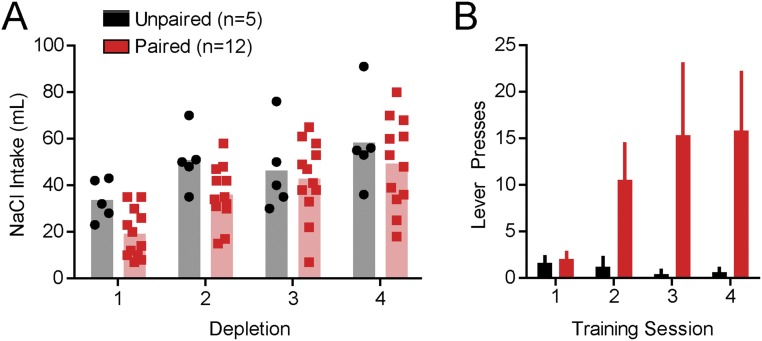Fig. S4.
Multiple days of sodium depletion and sodium CS-US training produce differential effects on sodium intake and sodium CS approach behavior depending on training history (related to Fig. 4). We sodium-depleted two groups of rats four times and conducted CS-US training either while rats were deplete (Paired, n = 12) or before depletion/following recovery (Unpaired, n = 5; SI Experimental Procedures). Thus, both groups of rats had the same experience with depletion and training, but the physiological state in which training occurred was manipulated between groups. (A) Over the course of training, both groups demonstrated an increased preference for hypertonic NaCl in the overnight test [significant effect of day (1–4): F3,45 = 20.64, P < 0.0001; no effect of training history (Unpaired, Paired): F1,45 = 2.32, P > 0.05; no interaction: F3,45 = 1.13, P > 0.05]. Our results are consistent with previous work showing that sodium intake in depleted rats increases over the course of multiple depletions (54). Importantly, it also demonstrates that the groups did not differ with respect to sodium preference before the FSCV recording session. (B) Only Paired rats began to interact with the cue lever during cue presentations. Pressing the lever had no impact on the occurrence of intraoral NaCl infusion. Group differences were not significant, but not all lever interactions (paw touching, bites, or licks) triggered a lever press. The recording sessions were video recorded to characterize Pavlovian conditioned-approach behaviors more accurately.

